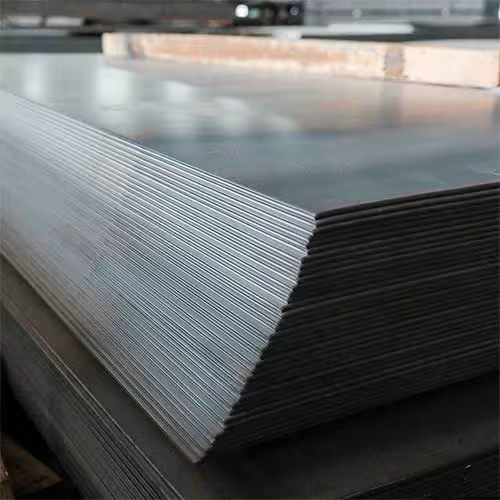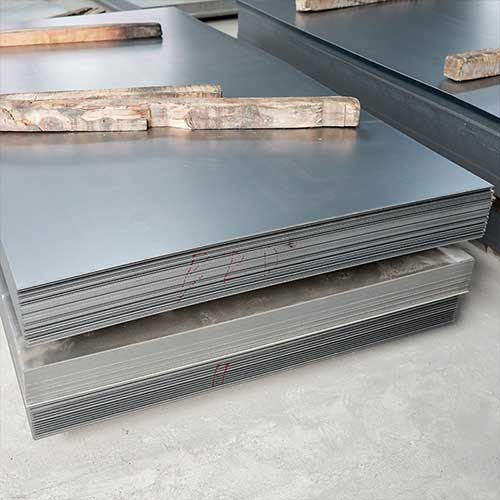Welcome to My Blog!
Before we dive into the content, I’d love for you to join me on my social media platforms where I share more insights, engage with the community, and post updates. Here’s how you can connect with me:
Facebook:https://www.facebook.com/profile.php?id=61565500692293
Now, let’s get started on our journey together. I hope you find the content here insightful, engaging, and valuable.
Table of Contents
Introduction
Alloy steel plate is a crucial material in modern industries, known for its enhanced strength, durability, and resistance to wear and corrosion. It is used in a wide range of applications, from construction and automotive to shipbuilding and heavy machinery manufacturing. By combining different alloying elements, alloy steel plates offer improved mechanical properties compared to carbon steel.
This guide explores the properties, classifications, applications, and benefits of alloy steel plate, helping industries make informed decisions when selecting the right material for their needs.
What is an Alloy Steel Plate?

Alloy steel plate is a type of steel that contains specific alloying elements such as chromium, nickel, molybdenum, and vanadium to enhance its mechanical and chemical properties. These alloying elements improve the material’s strength, toughness, corrosion resistance, and hardness, making it suitable for demanding industrial applications.
Key Properties of Alloy Steel Plate
- High Strength and Toughness: Alloy steel plates exhibit superior tensile and yield strength, allowing them to withstand extreme loads and stresses.
- Corrosion and Wear Resistance: The addition of alloying elements enhances resistance to rust, oxidation, and chemical exposure.
- Heat and Temperature Resistance: Certain alloy steel plates are designed to perform well under high temperatures, making them ideal for boiler and pressure vessel applications.
- Versatility: Alloy steel plates are available in different grades and compositions, offering flexibility for various industrial uses.
Types of Alloy Steel Plate
- Low-Alloy Steel Plate: Contains a small percentage of alloying elements (less than 5%) and is used for structural applications.
- High-Alloy Steel Plate: Contains a higher percentage of alloying elements (above 5%) and offers enhanced corrosion resistance and mechanical properties.
- Quenched and Tempered Alloy Steel Plate: Designed for high-strength applications, this type undergoes heat treatment to improve hardness and durability.
- Chromium-Molybdenum Alloy Steel Plate: Offers excellent heat resistance, making it ideal for pressure vessels and high-temperature environments.
Common Applications of Alloy Steel Plate


Construction and Infrastructure
- Used in bridges, high-rise buildings, and structural components that require high strength and load-bearing capacity.
- Provides excellent resistance to environmental factors, including corrosion and extreme temperatures.
Automotive and Transportation
- Used in the manufacturing of chassis, frames, and structural parts for automobiles, trucks, and railcars.
- Enhances durability while reducing overall vehicle weight, improving fuel efficiency.
Aerospace and Defense
- Applied in aircraft structures, landing gears, and missile components that require lightweight yet high-strength materials.
- Provides excellent impact resistance and fatigue strength in demanding environments.
Shipbuilding and Offshore Structures
- Used in hulls, decks, and structural reinforcements for ships, submarines, and offshore drilling platforms.
- Resists corrosion from seawater and harsh marine conditions.
Manufacturing and Heavy Machinery
- Applied in mining equipment, cranes, and industrial machinery that experience heavy loads and abrasive conditions.
- Improves longevity and performance in extreme operating environments.
Energy and Power Generation
- Used in boilers, pressure vessels, and heat exchangers for power plants and refineries.
- Withstands high pressure and temperature conditions for efficient energy production.
Comparison of Different Alloy Steel Plate Types
The following table highlights key differences between various types of alloy steel plates:
| Property | Low-Alloy Steel Plate | High-Alloy Steel Plate | Quenched & Tempered Steel Plate | Chromium-Molybdenum Steel Plate |
|---|---|---|---|---|
| Alloy Content | Less than 5% | More than 5% | Varies (Heat-treated) | High Chromium & Molybdenum |
| Strength | Moderate | High | Very High | High |
| Corrosion Resistance | Moderate | Excellent | Good | Superior |
| Heat Resistance | Moderate | Excellent | Good | Outstanding |
| Application | Structural & Bridges | Aerospace, Marine | Heavy Machinery | Power Plants, Boilers |
Advantages of Using Alloy Steel Plate

Enhanced Mechanical Strength
The alloying elements improve tensile strength and impact resistance, allowing the plate to withstand heavy loads.
Improved Corrosion Resistance
Certain alloy steel plates have coatings or inherent properties that prevent rust and oxidation, extending the material’s lifespan.
Excellent Temperature Resistance
Many alloy steel plates are designed to perform well under extreme heat, making them ideal for energy and manufacturing industries.
Versatility and Customization
Alloy steel plates are available in different grades, thicknesses, and compositions, allowing industries to select the most suitable material for their needs.
Sustainability and Environmental Benefits
Recycling alloy steel plates offers significant environmental benefits. By reintroducing these materials into the production cycle, we decrease the demand for newly mined resources and lessen the energy expenditure associated with primary production. This recycling process actively contributes to a more sustainable approach. Furthermore, the inherent strength and longevity of alloy steel plates play a crucial role in resource conservation. Their exceptional durability ensures that they require less frequent replacement compared to materials with shorter lifespans. This reduction in the need for repeated replacements translates directly into lower overall resource consumption over the long term, making them an environmentally sound choice.
Conclusion
Selecting the right alloy steel plate depends on the application, environmental conditions, and mechanical requirements. Whether you need high strength, corrosion resistance, or heat tolerance, there is an alloy steel plate suited for your needs.
Industries looking for reliable, high-quality alloy steel plates should consider trusted suppliers that offer a range of compositions and grades. Investing in the right material ensures long-term durability, cost-effectiveness, and superior performance in various applications. If you need more information, please feel free to contact us.
FAQ
What makes alloy steel plate different from carbon steel plate?
Alloy steel plate contains additional elements like chromium, nickel, and molybdenum, which enhance its mechanical properties, while carbon steel mainly consists of iron and carbon.
Which industries use alloy steel plate the most?
Industries such as construction, automotive, aerospace, shipbuilding, and energy production rely heavily on alloy steel plates for their strength, durability, and corrosion resistance.
Is alloy steel plate resistant to rust?
Certain alloy steel plates, particularly those with chromium content, offer superior corrosion resistance. However, some types may still require coatings or treatments to prevent rust.
How do I choose the right alloy steel plate for my project?
Consider factors such as load-bearing capacity, environmental conditions, temperature exposure, and corrosion resistance when selecting an alloy steel plate. Consulting with a supplier can also help determine the best grade for your application.
Can alloy steel plates be recycled?
Yes, alloy steel plates are highly recyclable, making them an environmentally friendly choice for industrial applications. Recycling reduces waste and minimizes the need for new raw materials.

